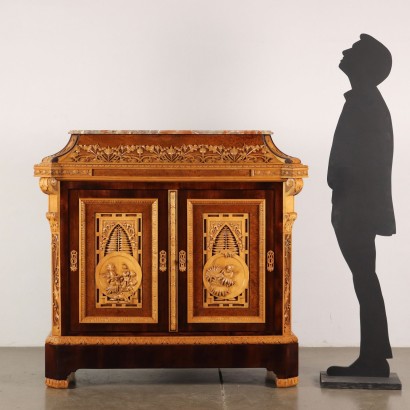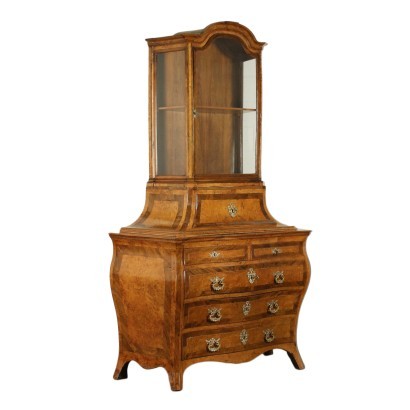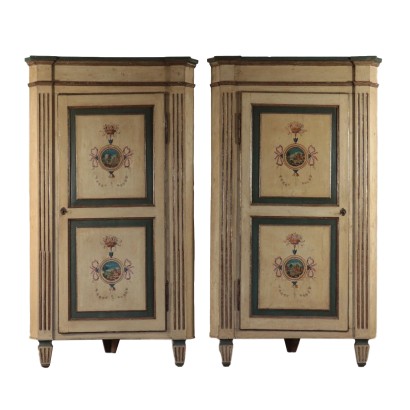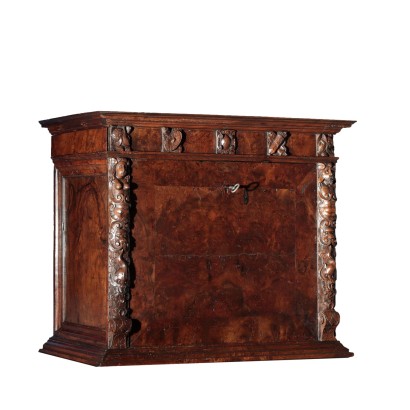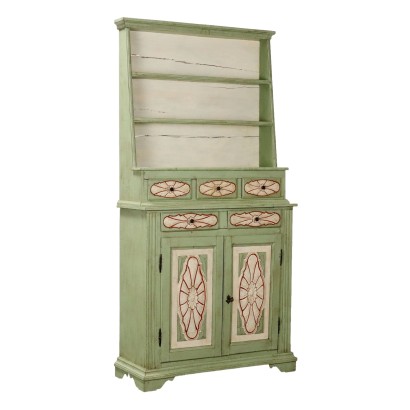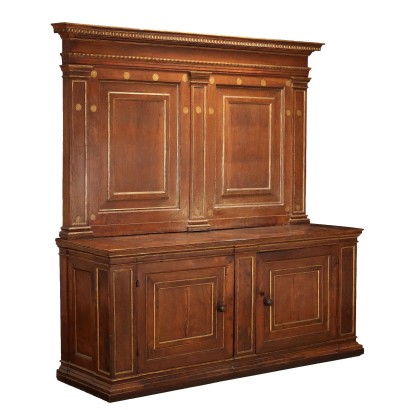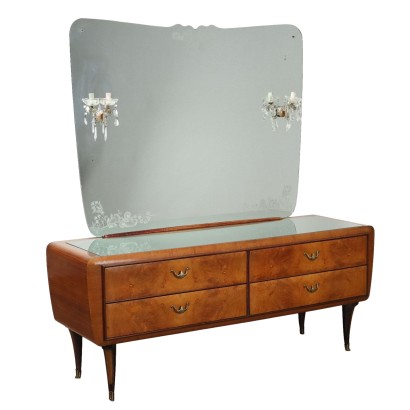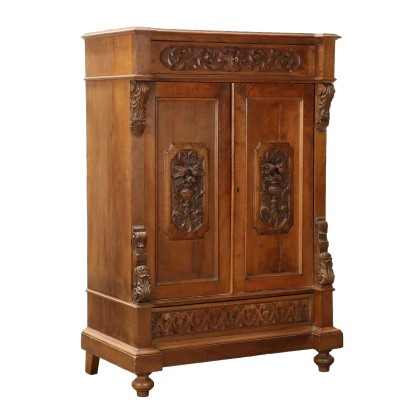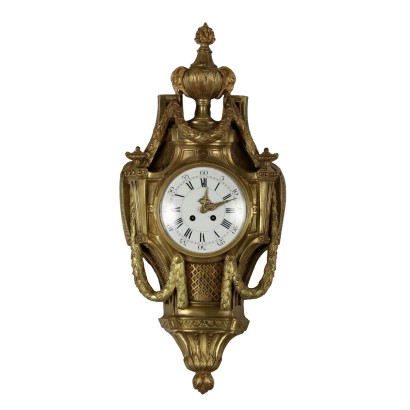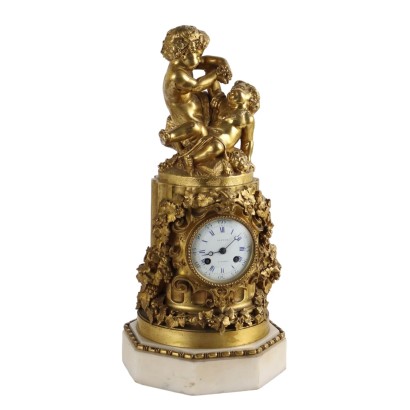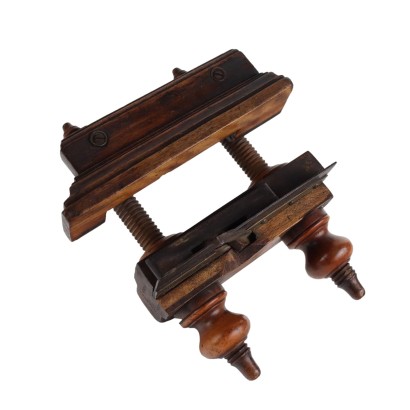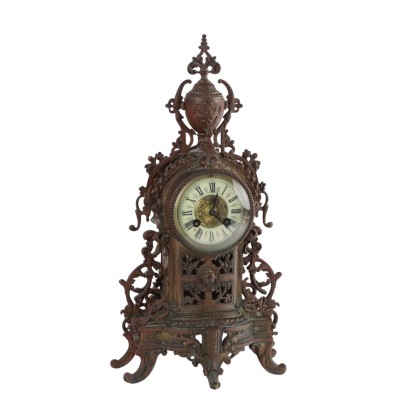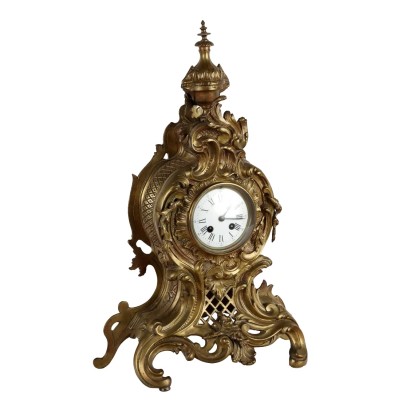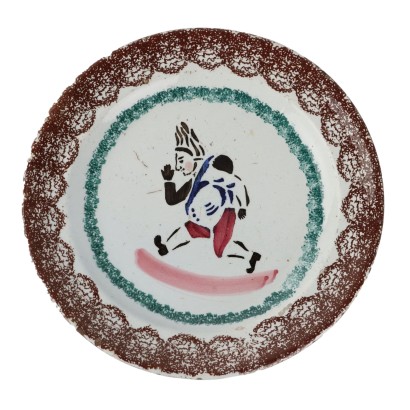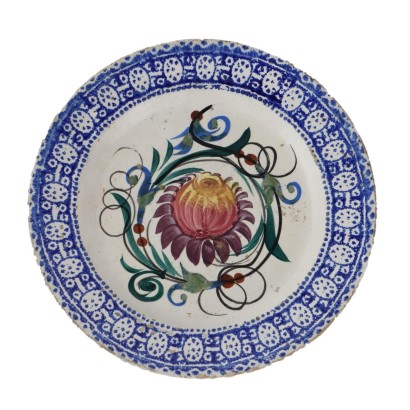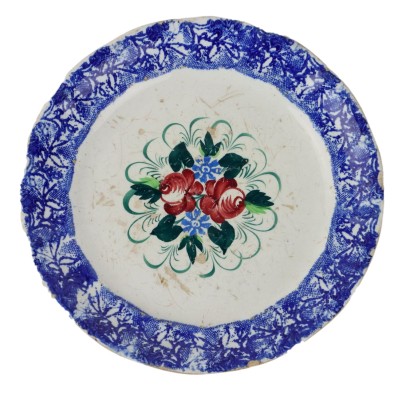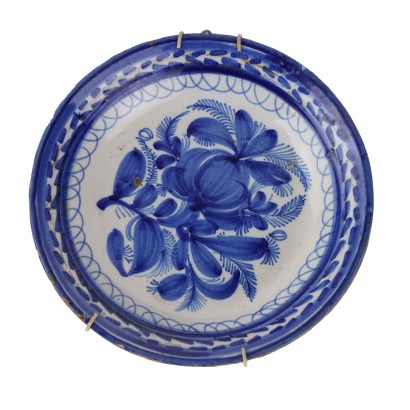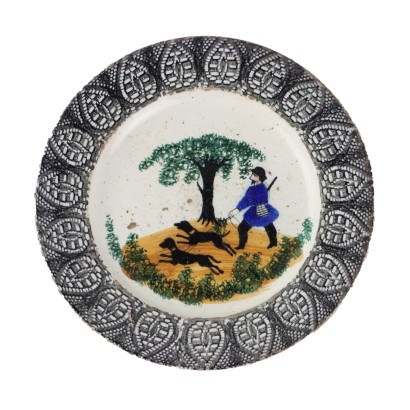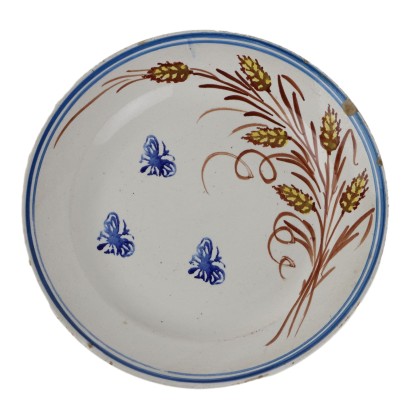Ancient Art Nouveau Cupboard Pogliani Lombardy '800 Carved Wood Maple - Lombardy, Late XIX Century
Features
Lombardy, Late XIX Century
Style: Art Nouveau (1890-1920)
Age: 19th Century / 1801 - 1900
Origin: Milano, Lombardia, Italy
Main essence: Maple , Indian Walnut , Thuja
Material: Breccia Marble , Burl Veneer
Description
Carved cupboard with urn-shaped riser, antique breccia top, front with two doors, uprights at 45 degrees. The whole structure of the piece of furniture is veneered with Indian walnut, thuya briar and is richly carved with maple worked with floral motifs. Carving with medallions with cherubs in nature surmounted by a fern branch contained in a pointed arch vault within the reserves of the doors decorated with four carved nozzles. Carvings also present on the uprights and on the corners, key with handle with liberty motifs. Ferdinando Pogliani was a furniture maker whose most frequent production concerned the use of ebony and ivory, a bedroom signed by him has recently been put on the market which corresponds to the structural and decorative characteristics of this sideboard. Pogliani was born in Milan in 1832 and ran a boutique in Porta Vittoria and a shop in via Montenapoleone together with his sons Carlo, Giuseppe and Paolo.
Product Condition:
Product that due to age and wear requires restoration and re-polishing. We try to present the real state of the furniture as fully as possible with photos. If some details are not clear from the photos, what is reported in the description will prevail.
Dimensions (cm):
Height: 129,5
Width: 139
Depth: 62,5
Additional Information
Style: Art Nouveau (1890-1920)
Historical stylistic period formed from the end of the 19th century (ca. 1890) after the Umbertino style and continued until the First World War.The current was characterized by the floral influence and the soft and curved lines, typical example are the "whiplashes".
The first signs of this new era came from architects such as Hector Guimard (1867-1942) who created numerous buildings and hotels, but also from people such as Arthur Mackmurdo furniture designer and Arthur Liberty industrialist and London merchant of the late 19th century who began to produce furnishing fabrics with floral motifs with soft and sinuous shapes.
The Universal Exhibition of Paris in 1900 was an important point for the development and affirmation of Liberty in the following decade.
Liberty was called in different ways depending on the nation, universally known as Art-Nouveau and it is thought that Arthur Liberty is the origin of the name given in Italy to this beautiful stylistic movement.
The name Art-Nouveau is thought to derive from a shop located in Paris called Maison de l'Art Nouveau which began to show off furniture with a new and innovative design in its windows.
With the end of the First World War, the naturalistic period of Liberty ended and the Art-Decò style appeared, with more rigid and geometric lines.
Find out more about the Liberty style with our insights:
Art Nouveau: birth and development of a style
Milan Liberty between flowers and colors
Carlo Zen's Liberty
Decorative shapes and elegance in an Liberty living room
FineArt: Aeolus and Cupid, Liberty sculpture by Luca Madrassi
FineArt: Nymph and Faun, Liberty sculpture by Giuseppe Siccardi
The Austrian taste of Baroque
Age: 19th Century / 1801 - 1900
19th Century / 1801 - 1900Main essence:
Maple
Hard, light wood used for inlays. It grows mainly in Austria, but it is widespread throughout the northern hemisphere, from Japan to North America, passing through China and Europe. It is one of the lightest woods ever, tending to white, it is similar to lime or birch wood. The briar is used in the production of ancient secretaires .Indian Walnut
Thuja
Fragrant and resinous wood, also used in ancient times for sacrificial rites. Due to its hardness and reddish-brown color very close to black it was used in cabinet making for veneers and inlays.Material:
Breccia Marble
Burl Veneer
Other customers have searched:
Ecco qualche spunto dal nostro blog e da FineArt per scoprire di più sul tema credenze:
Leggi di più
Una credenza che dialoga con il passatoCredenza doppio corpo, tesoro di intagli e decorazioni
Piccolo stipo, grande arredo
Stipo toscano a cavallo tra XVI e XVII
Credenza Barium di Luciano Frigerio
Credenza, Mathieu Befort Jeune, Parigi, terzo quarto XIX secolo
Mobile anni '60
Highboard '503' Gianfranco Frattini per Bernini
Mobile bar anni '40
Mobile Bar anni '40 '50, manifattura italiana
Sull'antiquariato in generale dai un'occhiata anche a:
Classic Monday: da un pezzo dei nostri magazzini alla storia dell'antiquariato
L'antiquariato dalla A alla Z: il Dizionario dell'Antiquariato
Il dizionario dell'antiquariato - Lastronatura
Il dizionario dell'antiquariato - Mascherone
Il dizionario dell'antiquariato - Natura morta
Il dizionario dell'antiquariato - Opificio
Il dizionario dell'antiquariato - Pastiglia
Il dizionario dell'antiquariato - Savonarola
Il dizionario dell'antiquariato - Rosone


